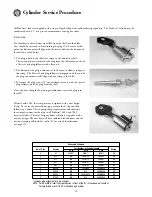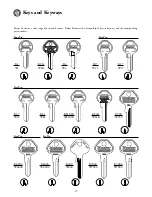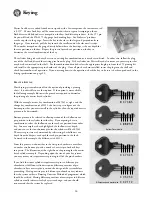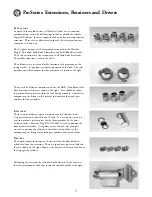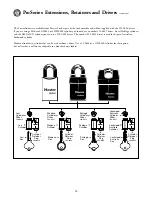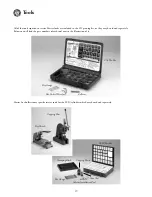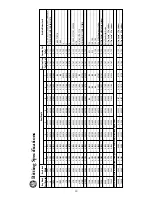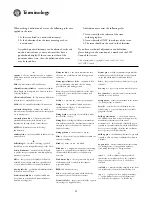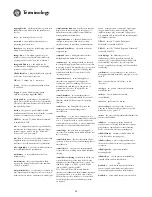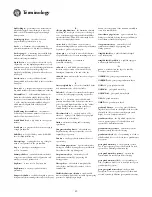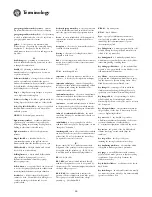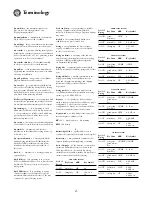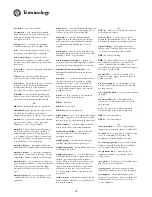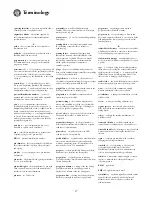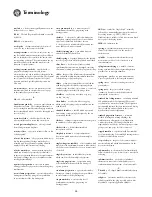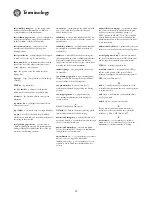
rim lock n. a lock or latch typically mounted on the
surface of a door or drawer
RL abb. The title “Registered Locksmith” as awarded
by ALOA
RM abb. row master key
root depth n. the dimension from the bottom of
a cut on a key to the bottom of the blade
rotating constant n. one or more cut(s) in a key of
any level which remain constant throughout all levels
and are identical to the top master key cuts in their
corresponding positrons. The positions where the top
master key cuts are held constant may be moved,
always in a logical sequence.
rotating constant method n. a method used to
progress key bittings in a master key system,
wherein at least one cut in each key is identical to the
corresponding cut in the top master key. The identical
cut(s) is moved to different locations in a logical
sequence until each possible planned position has
been used.
row master key n. the one-pin master key for all
combinations listed on the same line across a page
in the standard progression format
-S-
S/A abb. sub-assembled
Scandinavian padlock n. a cast case padlock with an
elliptical cross section. The locking mechanism is a
set of rotating disc tumblers, which engage notches in
the cast shackle and may be rotated by the angled cuts
cast on the key.
screen door lock n. a lock designed for the thin
stiles typically found on screen and storm doors
second generation duplicate n. a key reproduced
from a first generation duplicate
security collar n. a protective cylinder collar, see also
“cylinder guard”
selective key system n. a key system in which every
key has the capability of being a master key. It is
normally used for applications requiring a limited
number of keys and extensive cross keying.
selective master key n. an unassociated master key
which can be made to operate any specific lock(s)
in the entire system in addition to the regular master
key(s) and/or change key(s) for the cylinder without
creating key interchange
sequence of progression n. the order in which
bitting positions are progressed to obtain change key
combinations
seven column progression n. a process wherein key
bittings are obtained by using the cut possibilities
in seven columns of the key bitting array
seven pin master key n. a master key for all
combinations obtained by progressing seven
bitting positions
shackle n. 1. the part of a padlock, which passes
through an opening in an object or fits around an
object and is ultimately locked into the case
2. the portion of a restraint which fits around the
wrist, ankle, neck, waist or thumb
shackle retaining pin n. a pin which keeps an
unlocked shackle heel in the case
shackle spring n. a spring which pushes the shackle
into the open position when the padlock is unlocked
shear line n. a location in a cylinder at which
specific tumbler surfaces must be aligned, removing
obstruction(s) which prevented the plug from moving
shell n. the part of the cylinder which surrounds the
plug and which usually contains tumbler chambers
corresponding to those in the plug
shim n. a thin piece of material used to unlock the
cylinder plug from the shell by separating the pin
tumblers at the shear line, one at a time v. to unlock
a cylinder plug from its shell by using a shim
shoulder n. any key stop other than a tip stop,
see also “bow stop”
shove knife n. a tool used with a set-up plug
which pushes the springs and pin tumblers into the
cylinder shell
shrouded shackle n. a shackle which is protected
from cutting or tampering by design or by the use
of secondary shields
sidebar n. a cylinder component which enters gate(s)
in tumbler(s) to allow plug rotation
sidebar lock n. a lock mechanism which
incorporates a sidebar
simplex key section n. a single independent
key section which cannot be used in a multiplex
key system
single-acting lever tumbler n. a lever tumbler which
must be moved a minimum distance to allow travel of
a bolt, but cannot be moved so far as to restrict travel
of the bolt
single key section n. an individual key section
which can be used in a multiplex key system
single step progression n. a progression using
a one increment difference between bittings of
a given position
six column progression n. a process wherein key
bittings are obtained by using the cut possibilities
in six columns of the key bitting array
six pin master key n. a master key for all
combinations obtained by progressing six
bitting positions
SKD sym. symbol for "single keyed", normally
followed by a numerical designation in the standard
key coding system; e.g., SKD1, SKD2, etc.
It indicates that a cylinder or lock is not master keyed
but is part of the keying system
SMK abb. sub-master key
spacing n. the dimensions from the stop to the
center of the first cut and/or to the centers of
successive cuts
spindle n. a component which transfers rotary
motion from outside a lock or latch case to an
inner mechanism
split pin master keying n. a method of master
keying a pin tumbler cylinder by installing master
pins into one or more pin chambers
spool pin n. usually a top pin which resembles
a spool, typically used to increase pick resistance
spring cover n. a device for sealing one or more
pin chambers
spring seat n. the point at which a spring
is anchored, located or attached and at which
(from which) it exerts force
standard key coding system n. an industry standard
and uniform method of designating all keys and/
or cylinders in a master key system. The designation
automatically indicates the exact function and keying
level of each key and/or cylinder in the system,
usually without further explanation.
standard progression format n. a systematic
method of listing and relating all change key
combinations to all master key combinations in
a master key system. The listing is divided into
segments known as blocks, horizontal groups, vertical
groups, rows, and pages, for levels of control.
stepped tumbler n. a special (usually disc) tumbler
used in master keying. It has multiple bearing surfaces
for blades of different key sections.
stop (of a key) n. the part of a key from which all
cuts are indexed and which determines how far the
key enters the keyway
sub-master key n. the master key level immediately
below the master key in a system of six or more levels
of keying
substitution code n. a code whose individual
characters are converted to individual key cuts or
combination numbers by means of a reference table
-T-
T-handle n. a T-shaped handle assembly which may
be lockable
tailpiece n. an actuator attached to the rear of the
cylinder, parallel to the plug, typically used on rim,
key-in-knob or special application cylinders
Terminology
28

